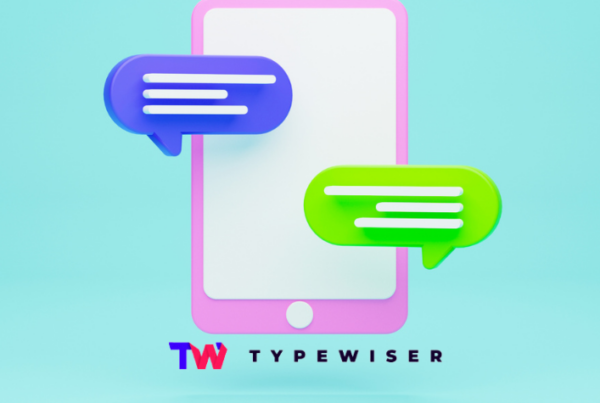Corporate AI has become a powerful force for change, offering businesses the ability to rethink their operations and customer engagement.
Success in corporate AI adoption often comes down to a company’s ability to align AI initiatives with business objectives and integrate the technology effectively, whereas many face challenges such as inadequate planning or lack of technical expertise.

The disparity often comes down to how AI is approached: whether it’s seen as a strategic asset or just another tool. For organizations to succeed in leveraging AI, it requires more than just adopting the technology — it demands clear vision, execution, and the right mindset.
But what exactly makes the difference between those who thrive with AI and those who fall short?
The Promise of Corporate AI in Business
The capabilities of corporate AI are vast, transforming the way businesses operate in nearly every sector. Here are a few key areas where AI is making waves:
- Operational Efficiency: Automating repetitive tasks using corporate AI can significantly reduce costs and improve operational efficiency. A recent report from Google found that UK workers could save an average of 122 hours per year through AI-powered automation of administrative tasks. This is an example of how corporate AI can free up human resources for more strategic and creative work
- Enhanced Customer Insights: By leveraging corporate AI, businesses can analyze vast amounts of customer data to generate actionable insights. Companies like Fiserv have incorporated AI-powered conversational surveys to gather valuable customer feedback, leading to improved customer satisfaction and increased revenue. The power of AI in personalizing customer experiences can be a major differentiator in today’s market.
- Strategic Decision-Making: Corporate AI can support data-driven decision-making by providing in-depth analytics on various factors like market trends, consumer behavior, and operational performance. This enables organizations to make better-informed decisions, resulting in faster growth and a stronger market position. Although some companies harness AI to drive innovation and efficiency, others struggle to unlock its full potential.
Common Pitfalls
 The gap between success and failure in corporate AI adoption is often due to a few key pitfalls that organizations face. Without careful consideration, companies can miss the mark when implementing AI technologies.
The gap between success and failure in corporate AI adoption is often due to a few key pitfalls that organizations face. Without careful consideration, companies can miss the mark when implementing AI technologies.
- Lack of Clear Objectives: One of the most common reasons corporate AI adoption fails is the absence of clear, measurable goals. When businesses implement AI without understanding the specific problems they want to solve, it’s easy for the initiative to lose direction. Organizations should focus on addressing specific challenges or goals, such as improving customer service or reducing costs, rather than just adopting AI for the sake of it. Defining success at the outset is crucial for long-term results.
- Poor Data Quality: Data is the backbone of corporate AI. AI systems are only as good as the data they are trained on. Inaccurate, incomplete, or biased data can lead to incorrect predictions and decisions. To maximize the effectiveness of corporate AI, businesses must invest in data governance strategies that ensure data accuracy, completeness, and fairness. Poor data quality is one of the leading causes of AI failures, and businesses must prioritize it for AI projects to succeed.
- Inadequate Infrastructure: Adopting corporate AI requires significant computational power and scalable infrastructure. Without the right technological foundation, businesses risk facing bottlenecks that hinder AI performance. Companies must ensure they have the necessary hardware, cloud solutions, and platforms that can handle AI workloads. Whether it’s on-premises or cloud-based, ensuring that your infrastructure is scalable and flexible is critical for supporting AI initiatives.
- Talent Shortage: AI adoption requires a skilled workforce with expertise in data science, machine learning, and AI development. Unfortunately, there is a talent shortage in the AI field, and many companies struggle to find qualified professionals. Whether through hiring AI experts or upskilling existing staff, businesses must invest in talent development to successfully implement corporate AI. Without the right expertise, even the best AI tools will struggle to deliver their full potential.
- Cultural Resistance: Change is difficult, and employees may resist the implementation of corporate AI due to fears of job displacement or simply unfamiliarity with the technology. Overcoming this resistance requires a cultural shift that embraces innovation. It’s essential for businesses to communicate the benefits of corporate AI, such as reducing the burden of repetitive tasks and creating new opportunities for more meaningful work. By fostering an adaptive and open mindset, organizations can ease the transition to AI adoption.
Strategies for Successful Corporate AI Integration
 To overcome the challenges of corporate AI adoption and achieve success, organizations need a clear, structured approach. Here are some strategies to ensure a smooth and effective AI integration:
To overcome the challenges of corporate AI adoption and achieve success, organizations need a clear, structured approach. Here are some strategies to ensure a smooth and effective AI integration:
- Define Clear Objectives: Start by identifying the specific problems that AI will solve. Establish measurable goals that align with the organization’s broader strategic vision. Whether it’s improving operational efficiency or enhancing customer satisfaction, having a clear objective is essential for success.
- Invest in Data Management: High-quality data is key to successful corporate AI implementation. Implement strong data governance protocols to ensure data integrity, accessibility, and relevance. Proper data management will ensure that the AI systems function as intended and provide accurate insights.
- Build the Right Infrastructure: Ensure your infrastructure can scale with the demands of corporate AI. Invest in cloud-based solutions or on-premise hardware that is flexible and capable of handling AI workloads. Scalable infrastructure is a foundational element of successful AI adoption.
- Develop Talent: Upskill your current workforce or hire AI specialists to ensure that your organization has the technical expertise necessary to manage and optimize AI systems. Building a team with the right skills is essential to unlocking the full potential of AI.
- Foster an Adaptive Culture: Encourage a culture that embraces change and values continuous learning. Address employee concerns about AI and highlight the benefits it can bring. A positive organizational culture will make the transition to corporate AI smoother and more successful.
Real-World Success Stories
- Fiserv: By integrating corporate AI into its customer feedback systems, Fiserv improved the quality of customer insights, resulting in higher satisfaction rates and increased revenue.
- 1-800Accountant: Through the use of AI to automate 65% of client interactions, 1-800Accountant realized significant cost savings and efficiency improvements.
- Boutique Consulting Firms: AI-driven boutique consulting firms are disrupting the traditional consulting industry by offering specialized, high-quality services. This is a great example of how corporate AI is enabling small businesses to challenge industry giants.
Conclusion
AI holds immense potential to revolutionize business operations, but its successful adoption requires more than just technological investment. Clear objectives, quality data, robust infrastructure, skilled talent, and an adaptive culture are all critical components. By addressing these areas, businesses can harness AI’s capabilities to drive innovation, efficiency, and growth.



